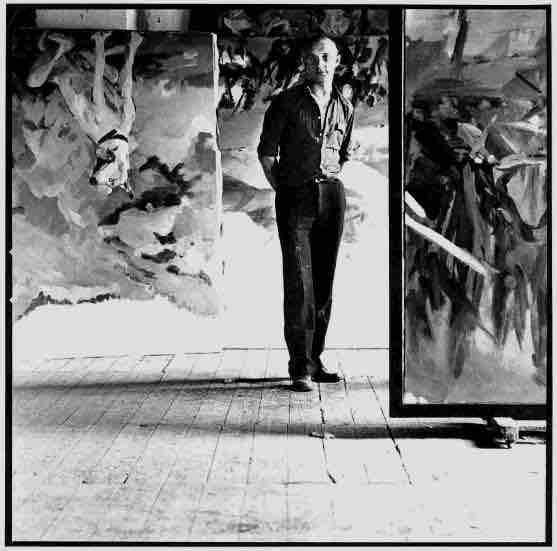Background
Neo-Expressionism is a style of modern painting and sculpture that emerged in the late 1970s and dominated the art market until the mid-1980s. Related to American Lyrical Abstraction of the 60s and 70s, the Bay Area Figurative School of the 50s and 60s, the continuation of Abstract Expressionism, New Image Painting, and precedents in Pop painting, Neo-Expressionism developed as a reaction against the conceptual and minimalist art of the 1970s. Neo-Expressionists returned to portraying recognizable objects, such as the human body (though sometimes an abstracted version), in rough and violently emotional ways using vivid colors and color harmonies.
Overtly inspired by so-called German Expressionist painters such as Emil Nolde, Max Beckmann, George Grosz, Ernst Ludwig Kirchner and other expressionist artists such as James Ensor and Edvard Munch, Neo-Expressionists were sometimes called Neue Wilden ("The new wild ones'"). The style emerged internationally and was viewed by critics as a revival of traditional themes of self-expression in European art after decades of American dominance.
The social and economic value of the movement was hotly debated. Critics questioned Neo-Expressionism's relation to marketability, the rapidly expanding art market, celebrity, the backlash against feminism, anti-intellectualism, and a return to mythic subjects and individualist methods that some deemed outmoded. Women were notoriously marginalized in the movement, with painters such as Elizabeth Murray and Maria Lassnig omitted from many of its key exhibitions, most notoriously from the 1981 "New Spirit in Painting" exhibition in London, which included 38 male painters and no female painters at all.
Elizabeth Murray, Wiggle Manhattan, lithograph, 1992
Elizabeth Murray is an example of a Neo-Expressionist painter who was marginalized in the movement due to her gender.
Neo-expressionism Around the World
Georg Baselitz , born January 23rd in 1938, is a German painter who studied in the former East Germany before moving to what was then West Germany. Baselitz's style is interpreted as Neo-Expressionist, but from a European perspective it is seen as postmodern. His career was amplified in the 1960s after the police took action against one of his paintings because of its provocative and offensive sexual nature.

Georg Baselitz by Lothar Wolleh (Mülheim, 1971)
Georg Baselitz's paintings are representative of Neo-Expressionism.
Ida Applebroog is a notable American painter whose work is included in many public collections in the United States. During the 1990s, she received multiple honors, including the College Art Association Distinguished Art Award for Lifetime Achievement, and an Honorary Doctorate of Fine Arts from the New School for Social Research/Parsons School of Design.
Neo-Expressionism As Postmodern Art?
The return to traditional painting in the late 1970s and early 1980s seen in Neo-Expressionist artists such as Georg Baselitz and Julian Schnabel has been described as having postmodern tendencies, and as one of the first coherent postmodern movements. Its strong links to the commercial art market has raised questions about its status as a postmodern movement and about the definition of postmodernism itself. Hal Foster stated that Neo-Expressionism was complicit with the conservative cultural politics of the Reagan-Bush era in the U.S.. Félix Guattari disregarded the "large promotional operations dubbed 'Neo-Expressionism' in Germany" as an example of a "fad that maintains itself by means of publicity" and as too easy of a way for him "to demonstrate that postmodernism is nothing but the last gasp of modernism. "
These critiques of Neo-Expressionism reveal that money and public relations strained the credibility of the contemporary art world in America during the same period that conceptual artists, and women artists including painters and feminist theorists like Griselda Pollock, were systematically reevaluating modern art. Brian Massumi claims that Deleuze and Guattari opened the horizon for new definitions of beauty in postmodern art. For Jean-François Lyotard, paintings by Valerio Adami, Daniel Buren, Marcel Duchamp, Bracha Ettinger, and Barnett Newman, after the avant-garde's time and the painting of Paul Cézanne and Wassily Kandinsky, were the vehicle for new ideas of the sublime in contemporary art.